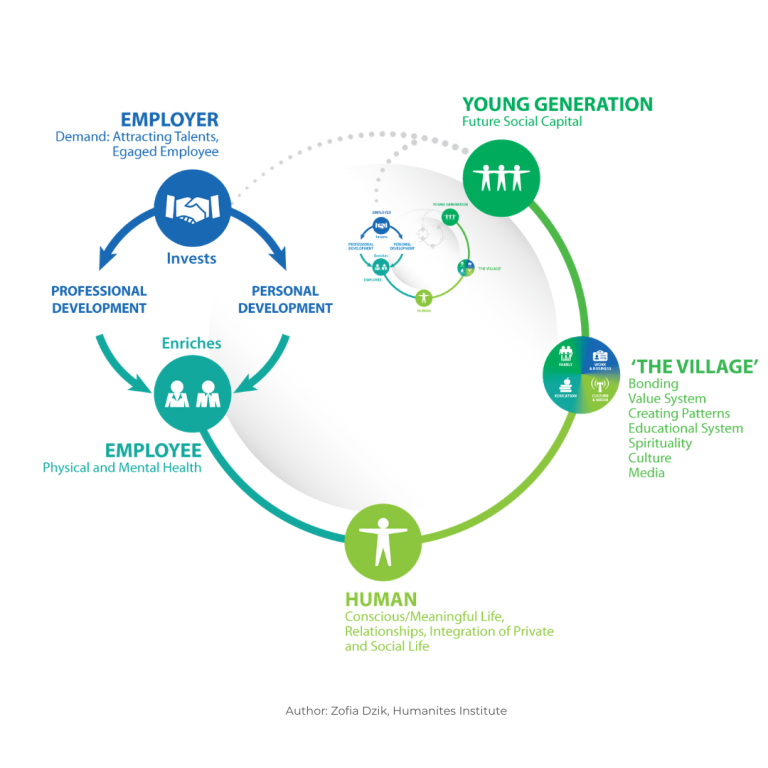“The Village” Model approach shows that today, we face a real challenge: the complexity of the world requires breaking the silo approach in problem-solving.
“The Village” Model approach shows that today, we face a real challenge: the complexity of the world requires breaking the silo approach in problem-solving. And yet, we have many of these: the tensions accumulated during the coronavirus, a sharp increase in unemployment, followed by phenomena that have been progressing over the years: the degradation of the public education, and growing social stratification.
The main question is: where lays the power for initiating the educational process and social changes, the force that can address the needs of people and prepare them for the upcoming future of life, possibly without work, or working from home, building close bonds in a nomadic world, finding day to day motivation and the sense of purpose? How to teach people to be a wise user of the new technology, not just an algorithmically managed object and slave.

“The Village” Model approach shows that today, we face a real challenge: the complexity of the world requires breaking the silo approach in problem-solving.
In my opinion, the big unutilised power of social impact is business and employers. Many CSR programs fail in that respect focusing on PR area or mainly eco-solutions rather than real social impact in respect of people and particularly own employees. We spend most of our life at work. Though, despite the declarations of putting human and employee in the centre, we experience many corporate cultures that do not meet these promises in reality.
The main difference that we propose in our “Loop” Model approach is showing that the reason why many business development programs fail and why so many people report lack of work-life integration (we are against the term of work-life balance) is that employers focus mainly on “technical” solutions, benefits, professional skills development of employees, calling it wellbeing but forgetting that human is multidimensional and there is a need to address all his/her mental, physical, emotional and spiritual zones.
“The Loop” Model aims to make employers aware of their social impact and show them that they can be the wheel change. We want to show them the benefits for business and society: by building the corporate culture that supports the wellbeing of its employees by inspiring them to more meaningful, healthy life, by building a better family, multigenerational bonding and letting them to well integrate their professional and private roles.
Many of employees are hypocritical by building a golden cage, organising their life, feeding them, entertaining them from the crack of down tonight and by this making them more enslaved, dependent and not teaching them how to manage and live their life on their own.
A happy man is also a better worker, a better parent, and a more committed member of the community.
The Model has a fractal (built from repeated elements) structure because we are talking about specific repetitions of development and interactions but each time on a different level. The main difference that we propose in our “Loop” Model approach is showing that the reason why many business development programs fail and why so many people report lack of work-life integration (we are against the term of work-life balance) is that employers focus mainly on “technical” solutions, benefits, professional skills development of employees, calling it wellbeing but forgetting that human is multidimensional and there is a need to address all his/her mental, physical, emotional and spiritual zones
If by Coherent Development, leaders will implement some patterns and get to a new, higher level of their personal development, they will impact the culture of their companies this way. And the approach to multidimensional development of their employees will also change, and they will pass those patterns and values to their children.
That shows the silos breaking approach to the education and development of the new generation by taking the responsibility only from families and education and making employers responsible for the answer to the question: what society do they want? What employees do they want in the future? What human being do they want in the future?
© Zofiia Dzik